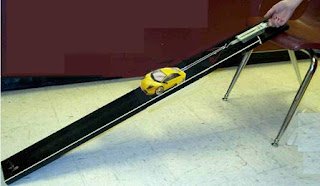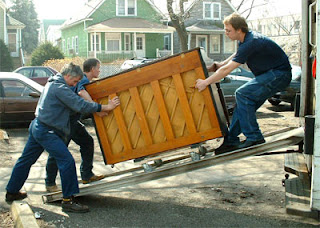Our experiment started out with a 750g car. We placed it on a ramp and attached a force probe to it. For our first test, we pulled the car up the ramp for a distance of 1.4m. (This required 0.36N of force) For the second test, we made the ramp steeper, and dragged the car a distance of 1m. (This required a force of 0.53N) For our final test, we made the ramp even steeper, and pulled our car a distance of 0.8 meters. (Requiring a force of 0.65N)
After we gathered all our data, we found that the work required to pull the car in all three tests was roughly the same. From our three tests we averaged 0.52J of work was required. So basically, we put in the same amount of effort each time, the only thing that changed was how far the car traveled up the ramp.
In our world today we can apply this notion to anything that involves a ramp. Movers for example, use ramps all the time to load and unload heavy objects. From our tests we noticed that the longer the distance of the ramp, the less force was required to pull the car. Movers use this notion when unloading couches or refrigerators. Its much easier to push a couch up a ramp instead of lifting it straight off the ground 5 feet in the air.
(The longer the ramp, the less force you need to pull the object.)
(These movers probably couldn't lift that piano straight into the truck. Thats why they're using a ramp.)



No comments:
Post a Comment